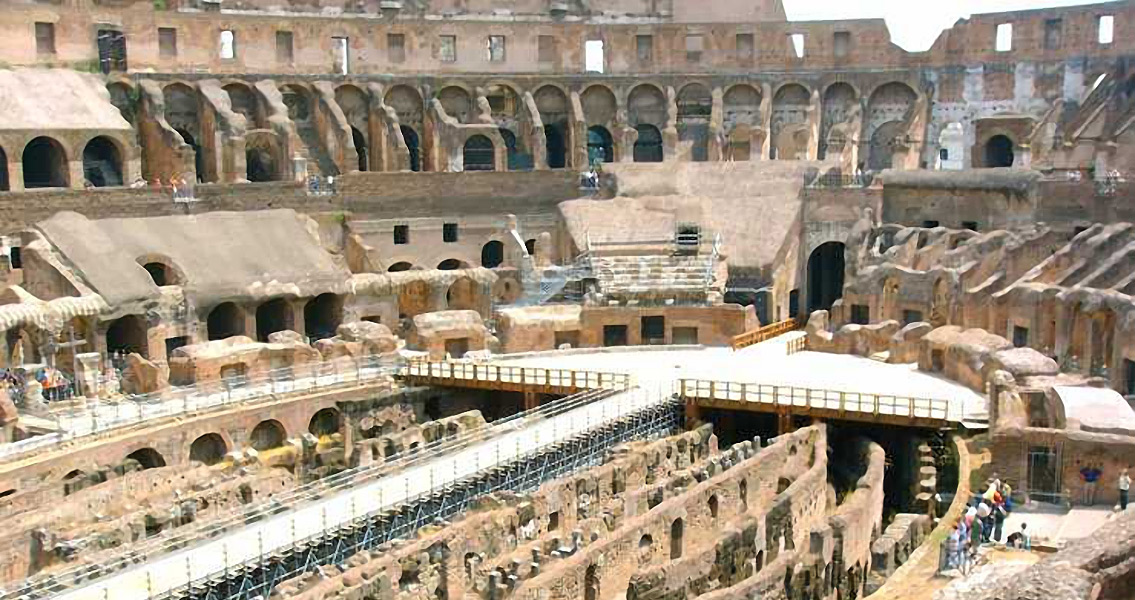<![CDATA[An ongoing restoration project on the Colosseum in Rome has revealed a seating plan similar to those found in modern arenas. Restorers discovered Latin letters and numbers painted in red on the Colosseum's entrance gate arches, which they think were used to allow spectators easier access to their seats. It seems that the numbers were initially carved into the travertine stones, before being filled in with red paint. Seating would have been allocated according to a spectator's social class. While modern stadiums tend to divide seating up according to the type and cost of the ticket purchased by the spectator, entrance to the Colosseum was free. A strict system was implemented to divide up seating in the four tiers, based on an individuals wealth and social standing. The paint's red colour was derived from the materials used in its composition - iron oxide and clay minerals. The paint could be applied without any binding substances, but it would have needed to be re-coated every two or three years, making the discovery of the letters nearly two thousand years later all the more remarkable. In the top tier was the emperor's box, which provided the best view of the arena. Other members of the Roman political and social elite also sat in the highest tier. On the second tier sat the Roman upper class, made up of government officials and business men. The third tier housed the ordinary Roman citizens, while in the fourth women and the poor sat or stood on wooden benches. Director of the Colosseum, Rossella Rea, told Discovery News how the red painted numbers would have been used; “The 50,000 spectators had a ticket that said which numbered gate arch they were supposed to enter. Inside the arena, there were other numbers to help people access their seats, which were assigned according to social class”. The Colosseum had a total of eighty entrances, seventy six of which were set aside for the general public. Of the remaining four, two were used exclusively by members of the highest social classes, namely, the emperor, magistrates, senators and wealthy patricians. The Vestal Virgins - a college of priestesses dedicated to the goddess of hearth Vesta and considered essential to the continuation of Rome's security - were also allowed to use this entrance, revealing just how highly valued they were in Roman society. Another of the entrances not used by the public was set aside for carrying the dead out from the arena - whether fallen gladiators or beasts - providing a grim reminder of the violence and brutality that took place in the Colosseum. The final entrance was used by gladiators parading before conflict, reflecting the considerations for pomp and ceremony that were a key part of the Colosseum's history. The painted numbers were discovered as part of an ongoing 25 million euro restoration of the Colosseum, funded by the Italian shoe company Tod. The restoration aims to repair damage done to the Colosseum since the Middle Ages. The restoration has involved the use of a water based process to remove layers of dirt and dust from the building without damaging the materials underneath. The Project's director, Cinzia Conti, told Wanted in Rome that the discovery of the numbers revealed the benefits of this delicate process. As the restoration proceeds, Rea's team hopes to find more traces of the red painted numbers in the close to 2000 year old monument. The discovery has provided a fascinating insight into how Roman authorities managed the 50,000 capacity arena, and the importance of hierarchy in Roman society. ]]>
Restoration Project Finds Red Numbers in The Colosseum
